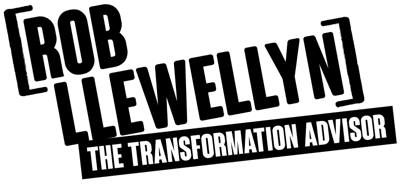There's no escaping the fact that most leaders who haven't been living under a rock for the last few years, now understand that they need to protect their firms against disruption, and better still, “disrupt the market”.
In all fairness, many are trying hard but unfortunately are falling victim to The Great Digital Illusion. Their teams are gallantly tinkering with digital marketing and upgrading the supply chain, etc. – which is all good and necessary. But in doing so, they typically consume their budgets and people in digital “change” projects which dominate their landscape.
As a result, while plenty of “digital change” is taking place, there is nothing “transformational” happening. Meanwhile, start-ups are busy hacking together new business models that will crucify the antiquated offerings of market incumbents – regardless of how big they are or for how long they've dominated the market.
Two Years to Disrupt Century Old Market Leaders
Let's take the example of the Dollar Shave Club. A crude start-up launched in 2011, with its first steal of market share underpinned by a $4,500 promotional video, some reliable, but not earth-shattering technology, and a business model to die for.
Within just a few years, they disrupted markets that global giants Gillette had dominated for over a century. Meanwhile, Gillette had been busy with their digital “change” projects but not protecting against disruption. Not “transforming” their business. Doing what they've been good at doing for over a century in the belief that they were untouchable.
But along came the Dollar Shave Club and in just a few years had slice away healthy share of Gillette's shaving market for themselves. To cut a long story short, the Dollar Shave Club sold out to Unilever in 2016 for $1 Billion. So now the likes of Gillette and Schick are no longer facing off with a tiny start-up with limited resources, and Unilever are now the proud owners of a disruptor.
The take aways from this short story are:
- It doesn't take IoT, Robotics, AI, etc. to disrupt a market. It takes the intelligent business use of smart technology.
- No company, regardless or size and market position, is immune to disruptive innovation.
- The Great Digital Illusion seduces leaders from some of the world's biggest brands.
- If you can't beat them (start-ups) by innovating yourself, and you have the money, then buy them as Unilever did.

Digital Disruption S-Curve
The digital disruption S-curve from McKinsey below clearly illustrates what established companies must understand and accept, before they are likely to undertake “legitimate transformation” and shake off The Great Digital Illusion they might be under right now.
- Where is your firm on the S-curve below?
- When might your blue line take a turn for the worse and plummet into obsolescence?
- What legitimate digital transformation are you undertaking to stop that from happening?

McKinsey does a wonderful job of creating world-class content that firms can learn from, and while some will go on to hire McKinsey to help them, most won't and that's business.
But if you're a smart leader who is prepared to adopt a digital and entrepreneurial mindset, you don't need big consulting firms to transform your business for you. But you can learn from and be inspired by, their intelligent and freely available content, such as the digital disruption cheat sheet below.
Digital Disruption Cheat Sheet
Download this Digital Disruption Cheat Sheet (courtesy of McKinsey).
Read this Incumbent's Guide to Digital Disruption
Then act. Because as with everything, knowing is one thing but successfully executing is quite another.
